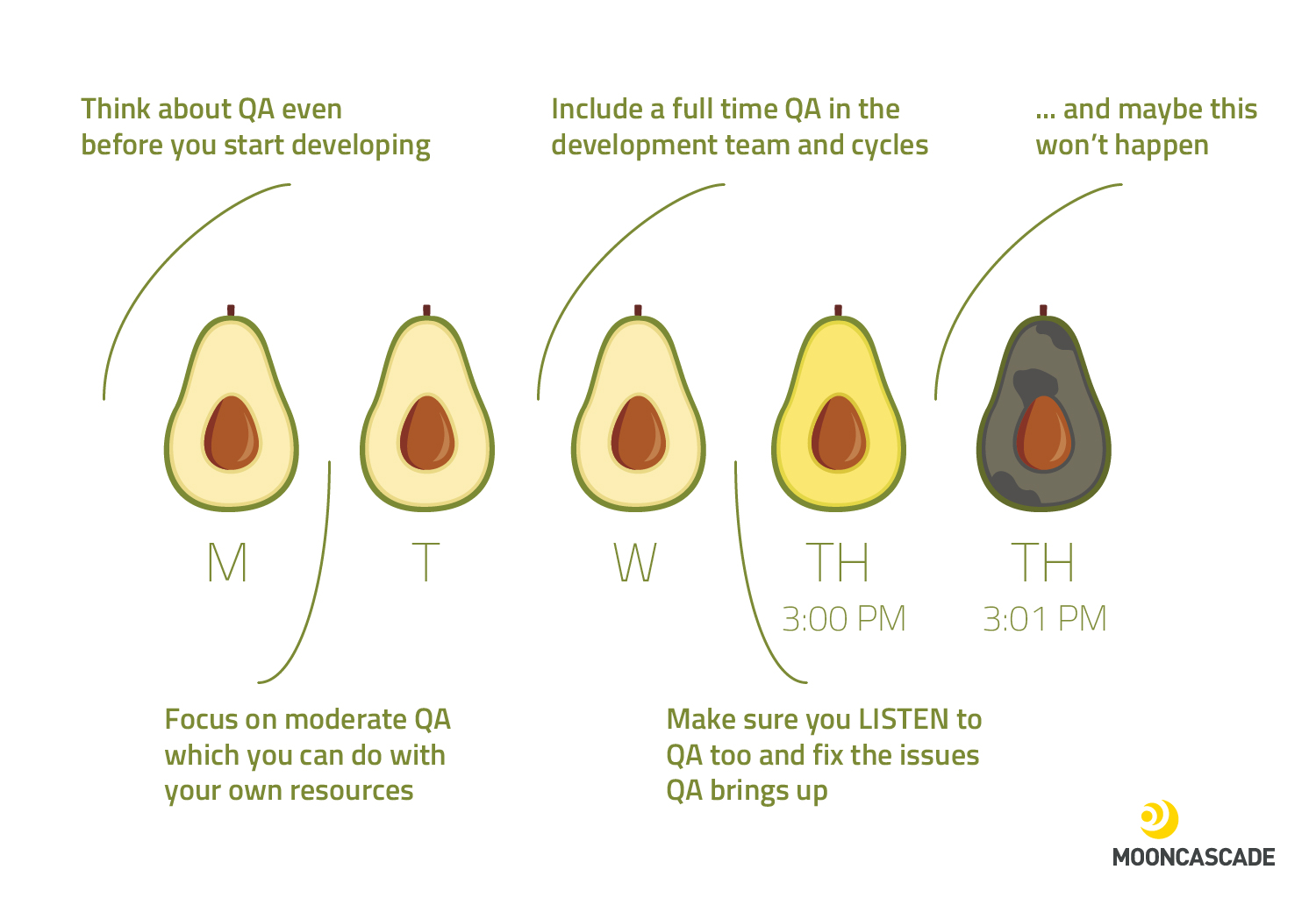When Money’s Tight, But The Product Needs To Be Tested: Agile QA For Startups
Every startup has to worry about tight budgets, especially early on. Any money raised usually disappears as quickly as it comes in. You’ve got to invest in development, pay your team, maybe even outsource part of the work to a partner or spend cash on legal advice.
When it comes to cutting costs, quality assurance is often one of the first things on the chopping block. However, ask any IT professional and they’ll tell you that this is a rookie mistake—especially in a startup environment. Not only can agile QA help you save money when developing and launching your product, it’ll likely make or break that product’s success.
Remember that you only get one chance to win a new customer over. You don’t want a bug to mess things up for you come launch time. That’s why testing is so essential: it checks every aspect of the product to make sure it works as well as possible before it hits the market. So let’s look at why agile QA is beneficial for startups, when to use it, and a few tips for starting to integrate it into your company’s workflow.
Why use agile QA in a startup environment?

The first thing to remember is that agile QA will save you money. When done properly, it can be an incredibly powerful and cost-effective tool. Designing test cases, modular frameworks, or even automated processes to test iterations as they happen will help you catch bugs quickly and early. Your developers will have to work less, fix less, and debug less as the product grows. Plus, you’ll dramatically lower the chances of any costly mistakes once things go live.
QA also improves security. In this data-driven age, people want to know their information is safe. No one wants a product that compromises sensitive information. It’s just not good for business. Because agile QA follows the pace of iterative development, it verifies security every step of the way, searching for flaws and ways to access any personal information contained in your product as you build it.
Ignoring QA can have a range of more or less serious consequences, depending on your field. A self-driving car recently killed a pedestrian after mistaking her for an inanimate object, something that could have been avoided with better testing. Looking back, other spectacular cases of poor QA include the 2003 Northeast Blackout, where 55 million people lost power for two days due to a software bug, or NASA’s 1999 Mars orbiter crash, a $125 million error caused by a misuse of units of measurement.
QA is an analytic process that improves your product’s quality as a whole, by testing your code and design every step of the way. It helps ensure that what you’re building is safe, usable, and viable. And trust me, agile QA makes it much easier to relax come launch time, especially if you’re running a startup and you’re worried about finances. Why? Because customers don’t just like quality—they pay for it, too.
Timing is everything

One key point to take into consideration when thinking about quality assurance in a startup context is timing. There’s no need to use your entire budget making sure your minimum viable product is perfect. But you don’t want to start thinking about agile QA too far into the process, either. The later you discover bugs, the harder and more costly they are to fix.
My advice is to do a certain amount of soft QA early on, just enough to be able to show serious investors a product with a good interface. Don’t waste time and resources having your whole company do extensive technical testing from the get-go. Just make sure it works well for a demo. Once you’ve got your investors locked down, then you can dive headfirst into the real thing.
Three tips for applying agile QA in startups
Now that you know why agile QA matters and when to use it, let’s go over a few tips for getting started with it.
Tip #1
My first piece of advice is to pace yourself. For simple tasks like UI, test the product with people around you. Organize testing sessions with friends and relatives. See how everyday users react to it. That’ll give you a great dataset to start with. As things move forward, then you can start involving your developers in more in-depth rounds of testing.
Tip #2
It’s important to keep the bigger picture in mind when thinking about agile QA. Don’t make it a separate phase or method, but plan it out and make sure it’s fully included in your budget. Find a median QA cost for your business case, then decide if you want to hire somebody to do it in-house or outsource it to a partner. However, always remember that QA works best when it’s fully integrated in your team’s workflow. An outsourced QA manager will likely be less involved, less knowledgeable, and less effective than someone who’s in your office everyday.
Tip #3
A good approach to agile QA for startups is acceptance test-driven development (ATDD). With this method, your whole team decides how the product will behave throughout the development process. For example, when a user clicks a login button, a set of outcomes needs to be determined: a successful log-in, an error message, etc. These outcomes become more complex as the product develops. Having everyone on the same page for each iteration will not only make testing easier and more efficient, it’ll also cut down on lost time and wasted money as things move forward. This agile approach is great for smaller teams because it helps keep the focus on the product, rather than on financial pressure or time constraints.

QA is right, even when money’s tight
Don’t skimp on testing, even if your company is young, broke, and full of promise. Making sure things are usable, secure, and cost-effective early on will save you plenty of expensive headaches down the road. It’ll also make your team more efficient and your launch more successful. Think of agile QA (and QA in general) as an end user working within your company. If your head of QA is happy, then your customers will be, too – and that’s a huge early step toward success.
Become a QA Specialist at Mooncascade
We are looking for a passionate QA to join our fast-growing team. If you want to be part of our agile QA team and help to build exciting mobile and web products for international clients, then let us know about you!

